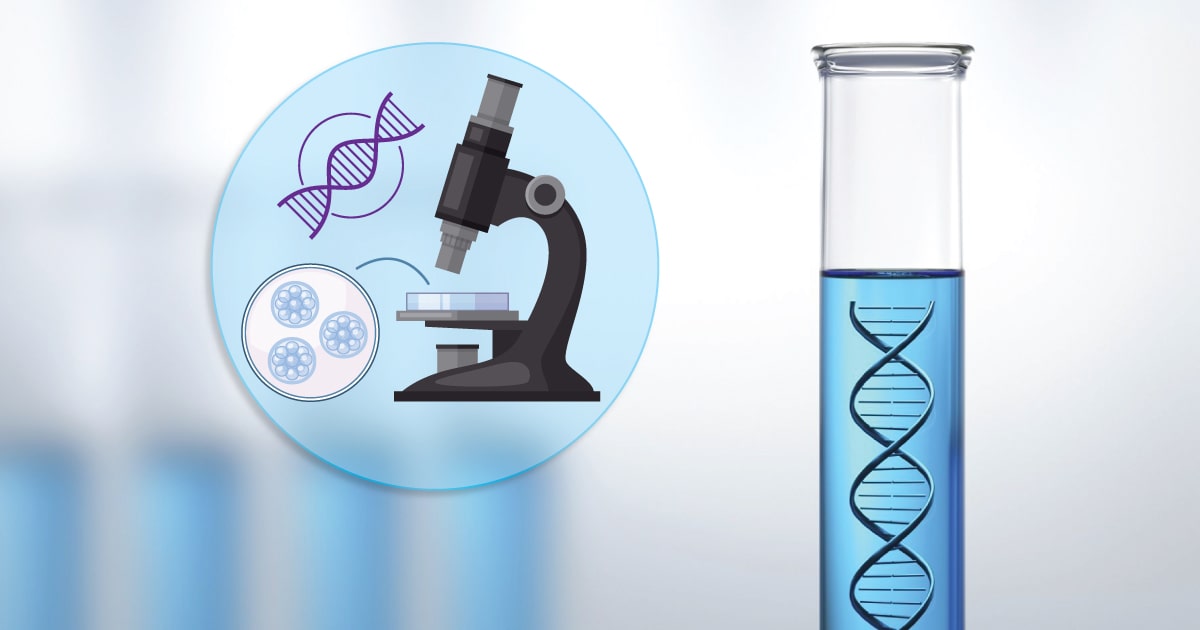
PGD & PGS Testing in Ahmedabad
In the realm of assisted reproductive technology (ART), two crucial procedures, Preimplantation Genetic Diagnosis (PGD) and Preimplantation Genetic Screening (PGS), have revolutionised the landscape of fertility treatments. These techniques offer hope to couples grappling with genetic disorders or seeking to optimise the success of in vitro fertilisation (IVF). At Shachi Women's Hospital, we understand the profound desire of individuals and couples to build their families. With cutting-edge technology and a compassionate approach, we offer Preimplantation Genetic Diagnosis (PGD) and Preimplantation Genetic Screening (PGS) services, i.e., PGD & PGS Testing in Ahmedabad, providing invaluable insights and support on the path to parenthood.
What is Preimplantation Genetic Diagnosis (PGD)?
Preimplantation Genetic Diagnosis (PGD) is a method used in fertility treatments like in vitro fertilisation (IVF). It checks embryos for specific genetic problems before they are implanted into the uterus. PGD helps identify embryos with certain genetic conditions or disorders, allowing doctors to select healthier embryos for implantation. This can reduce the risk of passing on genetic diseases to the baby. PGD is often used by couples with known genetic disorders or those at risk of passing on inherited conditions to their children.
What is Preimplantation Genetic Screening (PGS)?
Preimplantation Genetic Screening (PGS) is used during in vitro fertilisation (IVF). It checks embryos for chromosomal abnormalities before they are implanted into the uterus. PGS helps identify embryos with the correct number of chromosomes, increasing the chances of successful implantation and reducing the risk of miscarriage or genetic disorders. It is useful for people with a history of miscarriages or older individuals undergoing fertility treatments. PGS helps select the healthiest embryos, improving the chances of a successful pregnancy and the birth of a healthy baby.
PGS & PGD Testing Cost in Ahmedabad
The cost of Preimplantation Genetic Diagnosis (PGD) and Preimplantation Genetic Screening (PGS) in Ahmedabad can vary depending on factors such as specific testing methods used, and any additional services included. Generally, PGD and PGS are further procedures that may increase the overall cost of in vitro fertilisation (IVF) treatment. However, the average Cost of PGD typically varies from Rs 10,000 to Rs 20,000, while the average Cost of PGS can range from Rs 40,000 to Rs 50,000.
Difference between PGS and PGD:
Understanding the difference between Preimplantation Genetic Screening (PGS) and Preimplantation Genetic Diagnosis (PGD) is necessary for individuals navigating fertility treatments. Here's a simple comparison based on certain parameters mentioned by the specialist at our hospital who conducts the best PGD & PGS Testing in Ahmedabad.
In summary, PGS focuses on overall chromosomal health to maximise IVF success, while PGD targets specific genetic conditions to reduce the risk of inherited disorders. We conduct PGD & PGS Test for IVF at our hospital.
Who needs PGD?
Preimplantation Genetic Diagnosis (PGD) is a vital tool for individuals and couples navigating fertility treatments. Here are who may need PGD:
Who needs PGS?
Preimplantation Genetic Screening (PGS) offers hope for individuals and couples striving for successful IVF outcomes. Here are who may benefit from PGS:
Benefits of PGD
Preimplantation Genetic Diagnosis (PGD) offers a range of advantages for individuals and couples undergoing fertility treatments. Here are the key benefits:
Benefits of PGS
Preimplantation Genetic Screening (PGS) offers numerous advantages for individuals and couples undergoing fertility treatments. Here are some benefits provided by PGS:
Why Choose Shachi Women’s Hospital?
Shachi Women's Hospital is committed to providing exceptional fertility care and support. Our team of fertility specialists and genetic experts brings years of experience and expertise to every aspect of PGD & PGS Testing in Ahmedabad. We utilise advanced technology and state-of-the-art laboratory facilities to ensure accurate and reliable genetic analysis.
If you are considering PGD & PGS Test for IVF as part of your fertility treatment journey, we invite you to contact Shachi Women's Hospital. Our dedicated team is here to provide comprehensive support, compassionate care, and the highest standard of fertility treatment, helping you realise your dream of parenthood with confidence and optimism.

